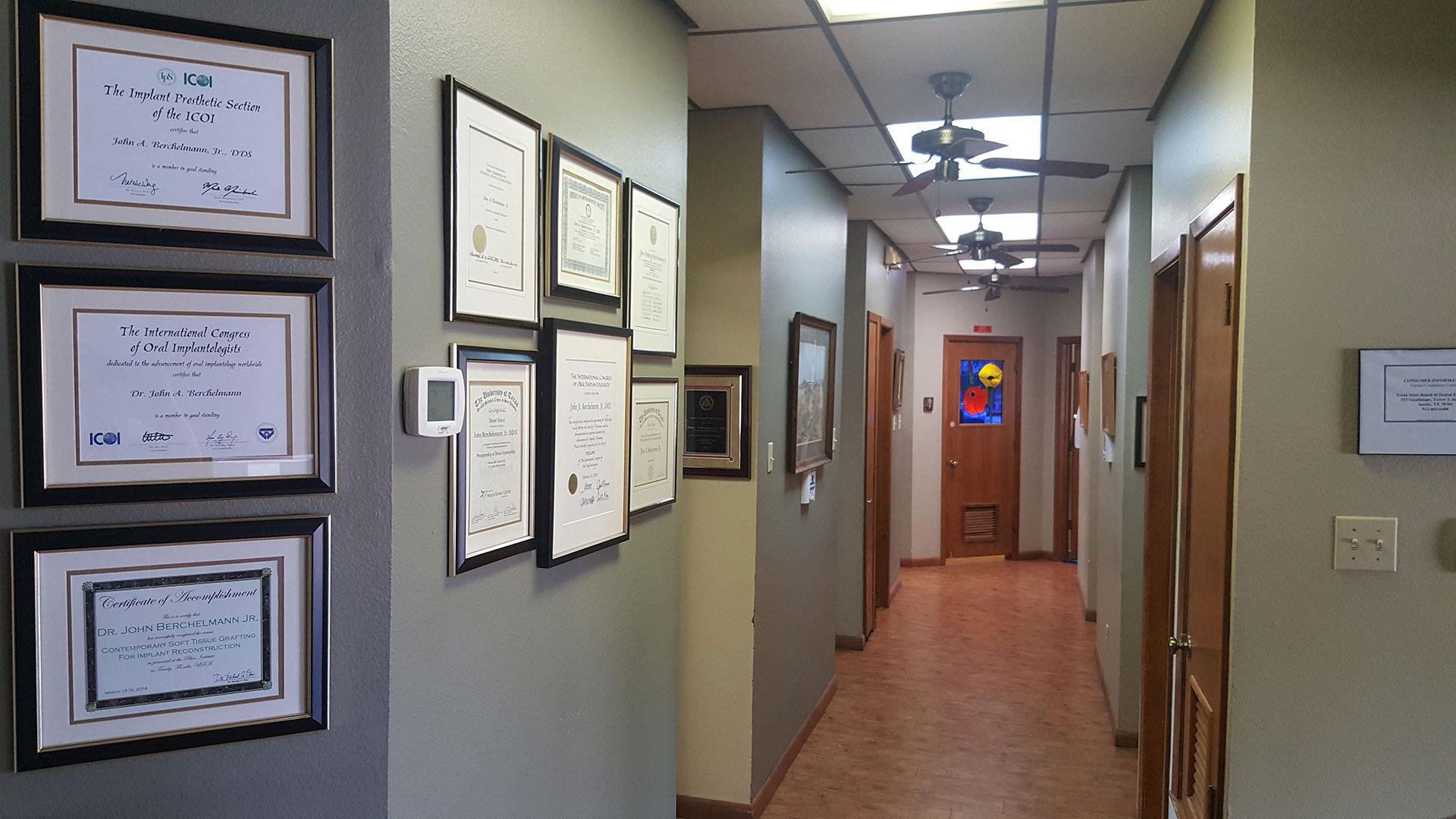New Patients
(210) 528-1910
Existing Patients
210-DENTIST

At our dental practice, we provide a wide range of dental services to cater to all your oral health needs. Our comprehensive list includes preventative care such as dental cleanings and oral exams, restorative treatments like fillings and crowns, cosmetic dentistry options like teeth whitening and veneers, and specialty services like dental implants, orthodontics with ClearCorrect, and sleep apnea treatment.
We also offer emergency treatment for those unexpected dental issues that may arise. Our team of experienced dentists works together to ensure you receive the best possible care for your smile.
Dental implants are a popular and effective solution for missing teeth. They work by replacing both the root and the crown of a tooth, providing a strong foundation for replacement teeth that look, feel, and function like natural ones.
The process begins with a consultation to determine if you're a suitable candidate for dental implants. If so, the next step is surgery where a small titanium post is inserted into your jawbone. Over time, this post fuses with the bone in a process called osseointegration, creating a sturdy anchor for your new tooth.
Once healing is complete, an abutment is attached to the implant, and finally, a crown or bridge is placed on top, restoring your smile.
ClearCorrect is a modern alternative to traditional braces for straightening teeth. It's a clear aligner system that uses a series of custom-made, removable, and nearly invisible trays to gradually move your teeth into the desired position.
The process begins with a consultation where our dentist will assess your oral health and determine if ClearCorrect is right for you. If so, impressions or scans of your teeth are taken to create your personalized treatment plan and aligners.
You'll wear each set of aligners for about two weeks before moving on to the next set in the series, with regular check-ups every six weeks to monitor progress. The length of treatment depends on the severity of your case but can range from several months to over a year.
A dental cleaning, also known as an oral prophylaxis, is a professional teeth cleaning procedure performed by our dental hygienist. The goal of this service is to thoroughly clean your teeth and gums, removing plaque, tartar (calculus), and stains that regular brushing and flossing can't reach.
The process typically involves the following steps: an initial examination of your mouth, scaling (removing tartar from above and below the gum line), tooth polishing to remove surface stains and plaque, and finally, a fluoride treatment to help protect your teeth against cavities. The entire cleaning process usually takes between 30 to 60 minutes.
Dental emergencies can happen at any time, and it's important to know how to handle them. At our practice, we prioritize emergency cases so that you can receive prompt care during these situations.
If you're experiencing severe tooth pain, swelling, or have a knocked-out tooth, contact us immediately for an appointment. In the meantime, here are some tips for common dental emergencies:
Sedation dentistry involves the use of medications to help patients relax during dental procedures. This option is ideal for individuals who experience anxiety or fear when visiting the dentist, have a low pain threshold, or need extensive dental work done.
The most common types of sedation used in our practice are nitrous oxide (laughing gas), oral conscious sedation (taken orally before the procedure), and IV sedation (administered intravenously during the procedure). Each type of sedation has its own benefits and side effects, which will be discussed with you during your consultation.
After the procedure, it's important to have someone drive you home if you've received oral or IV sedation, as the effects can take some time to wear off.
A dental bridge is a prosthetic device used to replace one or more missing teeth. It consists of one or more artificial teeth (pontics) supported by adjacent natural teeth or implants, creating a 'bridge' across the gap.
The process of getting a dental bridge involves several steps. First, our dentist prepares the supporting teeth for crowns, taking impressions of your mouth to create the bridge. A temporary bridge may be placed while the permanent one is being made in a lab.
Once completed, the bridge is cemented into place, restoring your smile and improving your ability to eat, speak, and maintain good oral hygiene.
Dentures are removable prosthetic devices used to replace missing teeth. They can be either full or partial, depending on the number of natural teeth remaining in your mouth.
Full dentures cover the entire jaw, while partial dentures consist of one or more artificial teeth attached to a gum-colored base and connected by a metal framework that holds them in place. Partial dentures are used when there are still some natural teeth present.
The process of getting dentures involves several appointments: initial consultations, impressions and bite registrations, try-in of the denture, and finally, delivery and adjustment of the finished denture. Proper care and maintenance are essential to keep your dentures clean and functional.
CBCT, or Cone Beam Computed Tomography, is a type of 3D imaging technology used in dentistry to create detailed images of the teeth, jawbone, and surrounding structures. Unlike traditional X-rays that provide two-dimensional views, CBCT scans produce high-resolution, cross-sectional images that allow our dentist to better visualize complex dental structures and plan treatments more accurately.
CBCT is often used for various purposes, such as diagnosing impacted wisdom teeth, planning dental implant placement, detecting jawbone abnormalities, and assessing the fit of dentures. The procedure is quick, painless, and involves minimal radiation exposure.
Welcome to our dental practice! Your first visit with us will be focused on getting to know you, your oral health needs, and helping you feel comfortable in our office. Here's what you can expect:
